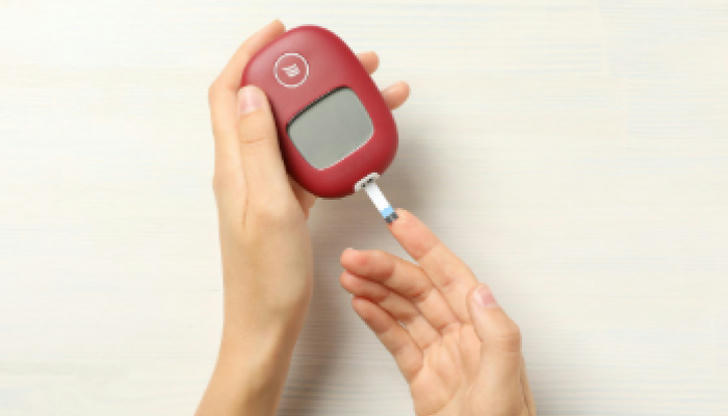How to Spot Early Diabetes and Slash Your Risk!
Diabetes is sneaky. It creeps up on millions of people worldwide without obvious warning signs---until it's too late. But what if you could spot the warning signs early and take action to prevent it? The good news is, you can! This article will reveal the early symptoms of diabetes, what diabetes really is, its dangers, and powerful ways to reduce your risk before it's too late.

What Is Diabetes and Why Should You Care?
Diabetes is a chronic disease that occurs when the body either doesn't produce enough insulin or can't effectively use the insulin it does produce. Insulin is the hormone responsible for regulating blood sugar levels. When blood sugar levels remain high for too long, it can lead to serious complications.
Diabetes by the Numbers
- Over 537 million adults worldwide have diabetes, and this number is projected to reach 643 million by 2030.
- In the United States, nearly 38 million people have diabetes, and 96 million have prediabetes---many without even knowing it.
- Diabetes is the 8th leading cause of death worldwide.
- Type 2 diabetes accounts for 90-95% of all diabetes cases, and lifestyle factors play a huge role in its development.
Types of Diabetes
| Type | Description |
|---|---|
| Type 1 Diabetes | An autoimmune condition where the body attacks insulin-producing cells, requiring lifelong insulin therapy. |
| Type 2 Diabetes | A condition where the body becomes resistant to insulin, often due to poor lifestyle habits. |
| Gestational Diabetes | A temporary condition during pregnancy, increasing the risk of developing Type 2 diabetes later. |
The Hidden Dangers of Diabetes
Diabetes isn't just about high blood sugar. If left unmanaged, it can lead to severe complications:
- Heart Disease & Stroke: Diabetes doubles the risk of heart attacks and strokes.
- Kidney Failure: High blood sugar damages kidneys, leading to dialysis or transplant.
- Blindness: Diabetes is a leading cause of blindness due to damage to the eyes' blood vessels.
- Nerve Damage: Known as diabetic neuropathy, causing pain, numbness, and infections that can lead to amputation.
- Alzheimer's Disease: Studies show a link between diabetes and a higher risk of dementia.

Early Symptoms of Diabetes You Should Never Ignore
Many people don't realize they have diabetes until it becomes a major health issue. Here are some red flags:
1. Unquenchable Thirst and Frequent Urination
If you drink more water than usual and rush to the bathroom constantly, your body might be struggling with high blood sugar.
2. Extreme Fatigue
Feeling unusually tired even after a full night's sleep? Your cells may not be getting enough energy due to insulin problems.
3. Unexpected Weight Loss
Losing weight without diet or exercise changes? This could mean your body isn't properly using glucose.
4. Blurry Vision
Diabetes can cause rapid eyesight changes, making it hard to focus.

5. Slow-Healing Wounds
Cuts or bruises that take forever to heal? High blood sugar weakens your immune system and slows healing.
6. Numbness or Tingling in Hands and Feet
Frequent numbness or tingling in fingers/toes could indicate nerve damage from high blood sugar.
7. Frequent Infections
Diabetes weakens immunity, making you prone to infections---especially in skin, gums, and urinary tract.
8. Increased Hunger
Constantly hungry even after eating? Your body may not be using glucose properly.
9. Dark Patches on Skin
Acanthosis nigricans causes darkened areas on neck, armpits, or groin, indicating insulin resistance.
If you notice one or more of these symptoms, take action!

How to Slash Your Diabetes Risk Starting Today
1. Master Your Diet with Smart Choices
| Food Type | Best Choices | Avoid These |
|---|---|---|
| Carbs | Whole grains, brown rice | White bread, sugary cereals |
| Proteins | Fish, chicken, beans | Processed meats, fried foods |
| Fats | Avocados, nuts, olive oil | Trans fats, margarine |
| Sugars | Natural fruits, dark chocolate | Soda, candy, pastries |
2. Stay Active: Move Your Body Every Day
- Aim for 30 minutes of moderate exercise (e.g., walking, swimming) 5 days/week.
- Strength training twice a week improves insulin sensitivity.
- Small changes like taking the stairs or standing while working help!
- HIIT is particularly effective for insulin sensitivity.
3. Manage Stress Before It Manages You
- Meditation & Deep Breathing: 5 minutes/day lowers stress.
- Regular Sleep: Aim for 7-9 hours nightly.
- Fun Activities: Hobbies like painting or time with friends help.
- Spending Time Outdoors: Nature walks reduce stress.
4. Keep an Eye on Your Blood Sugar Levels
Regular monitoring can catch problems early if you're at risk.
5. Kick Bad Habits to the Curb
- Quit Smoking: Smokers are 30-40% more likely to develop diabetes.
- Limit Alcohol: Stick to moderate consumption.
- Reduce Ultra-Processed Foods: Avoid hidden sugars and unhealthy fats.

The Bottom Line: You Have the Power to Prevent Diabetes!
By recognizing early signs and making lifestyle changes, you can stay ahead of the disease and live healthier. Start today!
👉 Don't wait! Share this article to help others stay diabetes-free!
